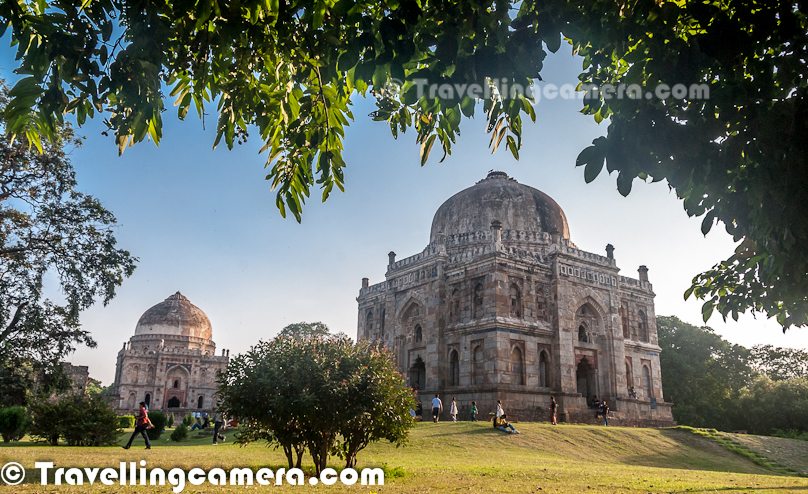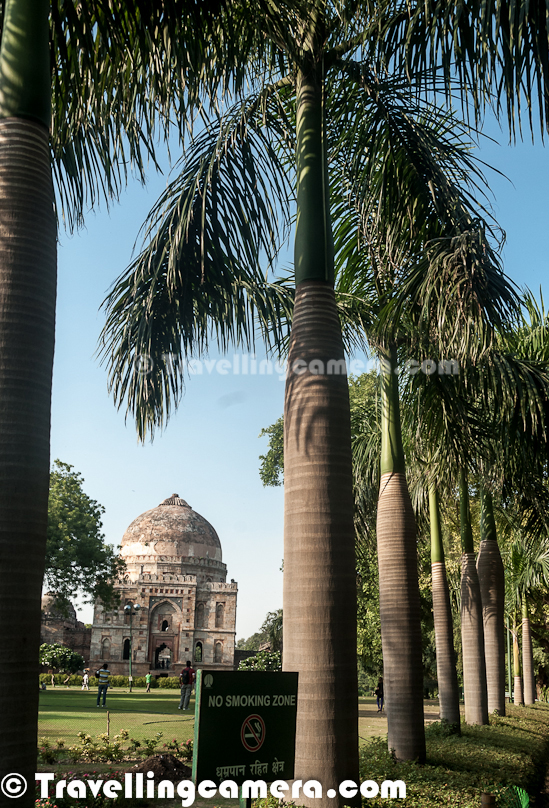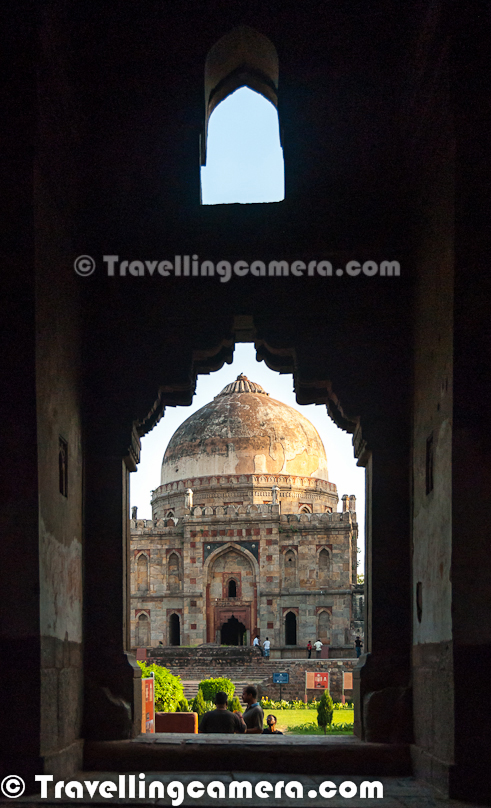Another visit to Lodhi Garden @ Delhi, INDIA || PHOTO JOURNEY through green lawns, interesting Monuments, water-bodies & meeting some birds
We have been to Lodhi Garden many times in last 7 years and it was always a different experience to see people all around doing various things. Good part is that garden is maintained very well and better things have happened in past. Let's check out this Photo Journey to know more about Lodhi Garden...
Most interesting visit to Lodhi Garden was during Scott Kelby Photo-walk when many of my office-friends were accompanying. We enjoyed it a lot and whole day was very productive.
People living around this graden prefer to come here for playing, book-reading or spending some quality time with their friends and families.
Lodi Gardens is a park in Delhi, capital city of India, which is spread over 90 acres and contains Mohammed Shah's Tomb, Sikander Lodi's Tomb, Sheesh Gumbad and Bara Gumbad, architectural works of the 15th century Sayyid and Lodis, a Pashtun dynasty which ruled much of Northern India during the 16th century, and the site is now protected by the Archeological Survey of India (ASI). Lodhi gardens are situated between Khan Market and Safdarjung's Tomb on Lodi Road. It is beautiful and serene, and is a hotspot for morning walks for the Delhiites.
Many folks love to spend their leisure time in green lawns of Lodhi Gardens. Many kids, families, joggers etc can be seen in happy posture. Relaxing environment all around the Lodhi Garden, makes it a wonderful place to spend free time with your loved ones. Kid in above photograph was at garden with his father and both of them were relaxing after playing football. This kid was quite energetic, as he was not interested in any breaks but his father want him to take some drinks/snacks in between.
Further into the gardens, there are remains of a watercourse connected to the Yamuna River to Sikander Lodi's tomb. This tomb still has the battlements enclosing it. Nearby to Sikander's tomb is the Athpula ('Eight Piered') Bridge, the last of the buildings in Delhi, built during the reign of Mughal Emperor Akbar, it contains seven arches, amongst which the central one being the largest.
I request you guys to contact this number again n again and make him feel that monuments are not built for stupid publicity with coal-marks on them. It's extremely sad to see people doing all this on walls of these monuments. There is a big need of educating Indians on this.
Still some of the portions of Lodhi Garden are under regular surveillance. Some security people are deployed around some of the monuments to ensure that people don't take these places lightly and do some harmful activities.
In the middle of Lodhi Garden, there is the Bara Gumbad which consists of a large rubble-construct dome and it's not a tomb but a gateway to an attached a three domed masjid (mosque), both built in 1494 during the reign of Sikander Lodi, there is also a residence surrounding a central courtyard, where the remains of a water tank can be seen. Opposite the Bara Gumbad is the Sheesh Gumbad (Glass dome) for the glazed tiles used in its construction, which contains the remains of an unknown family, this was also built during the reign of Sikander Lodi.
The tomb of Mohammed Shah, the last of the Sayyid dynasty rulers, the earliest of the tombs in the garden, was built in 1444 by Ala-ud-din Alam Shah as a tribute to Mohammed Shah.
Tea vendors can be seen all around the garden. Apart from hot tea, vendor offering cold-drinks & snacks can be seen inside Lodhi Garden.Ideally all these activities make the place dirty but somehow people have learned to use dustbins, although some exceptions would always be there.
As there is little architecture from two periods remaining in India, Lodi Gardens is an important place of preservation. The tomb of Mohammed Shah is visible from the road, and is the earliest structure in the gardens. The architecture is characterized by the octagonal chamber, with stone chhajjas on the roof and guldastas on the corners.
Sunset light coming directly to hit these walls of Mosque. Orangish light shades make things more beautiful at times.
A view of Big Dome from entry to the gate through Gate No 1. There is a huge lawn between the big dome and Gate No 1 with some trees planted symmetrically. Whole garden has appropriate number of dustbins installed at most relevant locations and sign-boards around warnings, directions etc.
Another tomb within the gardens is that of Sikander Lodi, which is similar to Mohammed Shah's tomb, though without the chhatris, it was built by his son Ibrahim Lodi in 1517, the last of Sultan of Delhi from Lodi dynasty, as he was defeated by Babur, First battle of Panipat in 1526, this laying the foundation of the Mughal Empire. His tomb is often mistaken to be the Sheesh Gumbad, and is actually situated in near the tehsil office in Panipat, close to the Dargah of Sufi saint Bu Ali Shah Qalandar. It is a simple rectangular structure on a high platform approached by a flight of steps. The tomb was renovated by the British, and an inscription mentioning Ibrahim Lodi's defeat at the hands of Babur and the renovation was included in 1866.
Check out more at - http://en.wikipedia.org/wiki/Lodi_Gardens



.jpg)
.jpg)

.jpg)
.jpg)
.jpg)
.jpg)
.jpg)
.jpg)
.jpg)
.jpg)


.jpg)

.jpg)
Comments
d category of "parks" dat one can go to for walks in Delhi, without being bothered. d place is beautiful speacially in d winters.
http://www.myfashionbaye.blogspot.in
do i need to say more!!
lovely images!!
http://sushmita-smile.blogspot.in/
UrbanRaw - True.. but I guess many of such parks in South Delhi are well maintained. Nehru Park is another one, which comes to my mind immediately.
Shooting-Star : Happy that you liked the way I captured this place, which is so special for you :)